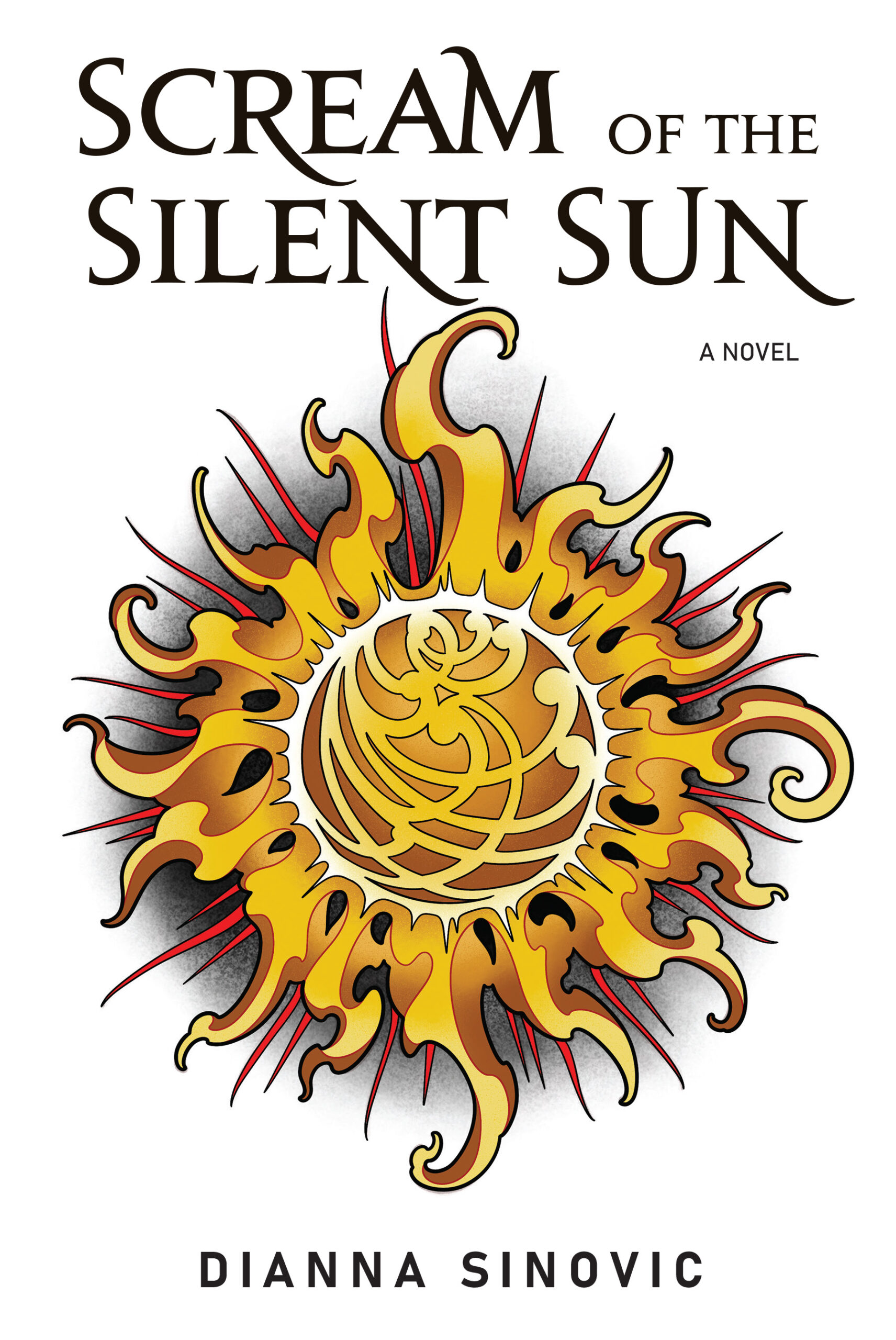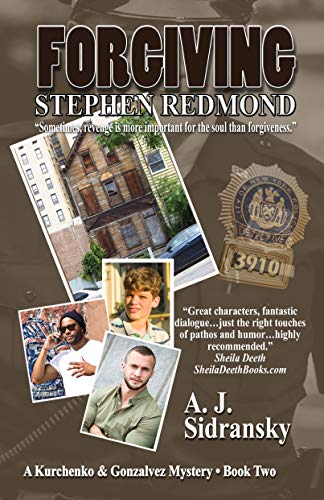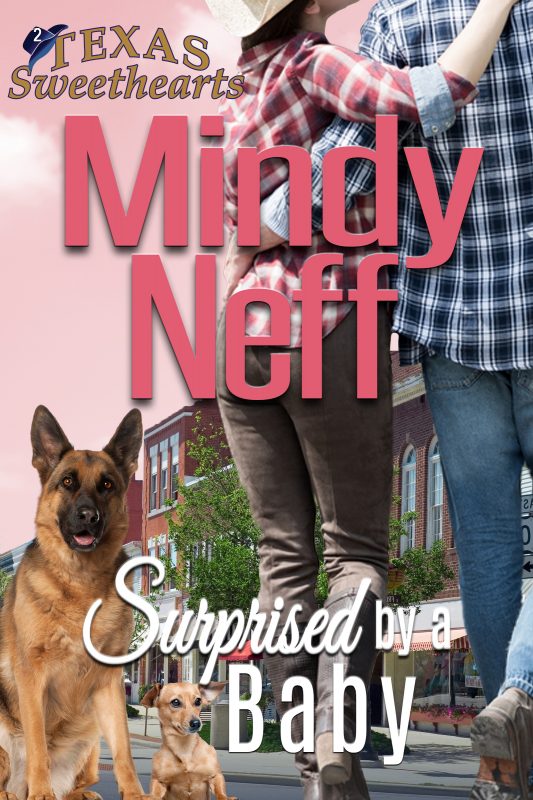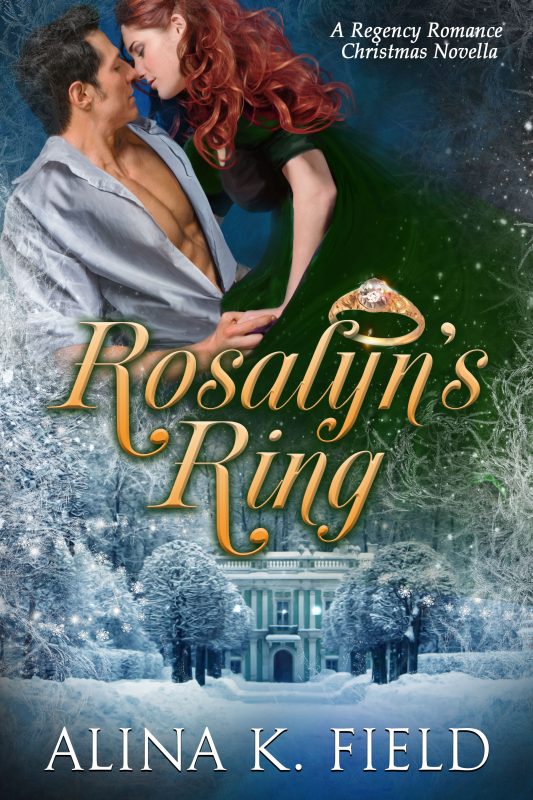10 Bits of Writing Advice from J.R.R. Tolkien
August 18, 2014 by A Slice of Orange in category Archives tagged as #LOTR, Jenny Hansen, The Hobbit, Tolkien, writing by Jenny Hansen
by Jenny Hansen
What if J.R.R. Tolkien had never written his books? What if there had been no Hobbits and no Gandalf, no Legolas or Frodo? The world of story would be an entirely different place.
Our stories matter. They really do.
10 Tips from the “Master of Middle Earthâ€:
1. Vanity is useless.Truly, Tokien wrote his books to please himself and answer the writer inside him. He expected them to go “into the waste-paper basket†after they left his desk, not live on in popular culture. I’m not saying we don’t need to learn good story craft however, if you entertain yourself, at least you know one person that enjoyed the hell out of your book.
2. Keep writing, even through adversity.It took the man SEVEN years to write The Hobbit. He balanced a demanding day job, illness, and worry for his son who was away in the Royal Navy. I’m reminded of Laura Drake, her brick wall, and her 400+ rejections.
3. Listen to critics you trust.When his editor said, “Make it better,†he didn’t throw the advice away. He read and re-read, and he tried his best. He credits listening to knowledgeable feedback, and working to make it better, for what he considered the best scene in the Lord of the Rings: “the confrontation between Gandalf and his rival wizard, Saruman, in the ravaged city of Isengard.†Oh, and the editor he listened to? C.S. Lewis, the creator of the Chronicles of Narnia.
4. Let your interests drive your writing.Tolkien’s original interest was in languages. He took that and created new languages, and then an entire culture, around it. Our own contributor, Kathryn Craft, was a dancer, choreographer, and dance critic. She tapped all that experience to write The Art of Falling, exploring themes of love, dance, friendship, and distorted body image. that passion and truth will resonate with readers.
5. Poetry can lead to great prose.When he could not express his thoughts in the prose he wished for, he wrote much of it in verse. Authors as diverse as Charlotte Brontë and Langston Hughes started in poetry before moving to longer mediums. Next time you get stuck, you might try Tolkien’s trick of writing your scene as a poem first.
 6. Happy accidents.No matter how much you plan, happy accidents occur on the pages of every book. Jennifer Crusie calls it “the girls in the basement,†saying they hand her up treasures as she writes. Others might call it “the muse.†One more kick in the pants from my criitique partner, Laura Drake: If you don’t put your butt in the chair and do the work, you won’t have any “happy accidents.â€
6. Happy accidents.No matter how much you plan, happy accidents occur on the pages of every book. Jennifer Crusie calls it “the girls in the basement,†saying they hand her up treasures as she writes. Others might call it “the muse.†One more kick in the pants from my criitique partner, Laura Drake: If you don’t put your butt in the chair and do the work, you won’t have any “happy accidents.â€
7. Dreams give us inspiration. All of us have dreams so strong, they push us to the page. But what about literal dreams? Angela Ackerman at Writers Helping Writers did a great post called How to Mine Your Dreams for Story Gold. When Tolkien dreamed of drowning, he channeled the experience into motifs and prose for his stories. His “letters” describe how that drowning dream morphed into the drowning feeling of Mordor’s invasion of Middle Earth and the drowning of Isengard.
8. Real people make great characters.Tolkien drew on real people to populate Middle Earth. You can draw on people you know for your stories as well. Real people do amazing things, both big and small, and rarely do they recognize themselves on the page. It’s a win-win for authors.
9. You may be the next bestselling author.Tolkien did not expect the acclaim he received from his first book, The Hobbit. He felt like it was a happy accident. Here are fourteen bestselling books that were repeatedly rejected by publishers. You won’t know until you send it out. Perhaps your cross-dressing unicorn superheroes will be the next phenomenon. (Yes, I made that up.)
10. Books you write may seem trite.We can’t see our own work. A scene we find melodramatic, the reader might find moving. Tolkien believed that if you learn some craft and pour your heart and imagination onto the page that the work will resonate. I believe that too.
Note: Here’s a link to Tolkien’s work in its entirety. The aforementioned infographic summarized material from a wonderful post by Roger Colby at Writing Is Hard Work, outlining his research on writing advice shared by the Lord of the Rings author in the book, The Letters of J.R.R. Tolkien.
About Jenny
 By day, Jenny provides training and social media marketing for an accounting firm. By night she writes humor, memoir, women’s fiction and short stories. After 15 years as a corporate software trainer, she’s delighted to sit down while she works. When she’s not at her personal blog, More Cowbell, Jenny can be found on Twitter at JennyHansenCA or at Writers In The Storm. Jenny also writes the Risky Baby Business posts at More Cowbell, a series that focuses on babies, new parents and high-risk pregnancy.
By day, Jenny provides training and social media marketing for an accounting firm. By night she writes humor, memoir, women’s fiction and short stories. After 15 years as a corporate software trainer, she’s delighted to sit down while she works. When she’s not at her personal blog, More Cowbell, Jenny can be found on Twitter at JennyHansenCA or at Writers In The Storm. Jenny also writes the Risky Baby Business posts at More Cowbell, a series that focuses on babies, new parents and high-risk pregnancy.
photo credit: kugel via photopin cc
0 0 Read moreJenny’s Top 10 Tips for Microsoft OneNote
April 18, 2012 by A Slice of Orange in category Archives tagged as Jenny Hansen, OneNote, organization, technology, writing- In the top middle of your Home ribbon in OneNote, there is a “To Do†button
- Type your To Do
- Hit Enter
- Use the Ctrl+1 shortcut key again to add more checkboxes
- Copy and paste it to Word
- Email it.
- Right click on your OneNote table and choose “Copy Link to Paragraph†to embed it in a document anywhere else on your computer. (If you haven’t set up SkyDrive, the One Note file and the file where you pasted the link must be on the same computer!)
Helpful Links:
- My favorite OneNote tutorial from How-To Geek
- Microsoft OneNote – An Author’s Best Friend from Self-Publishing Review
- For those of you who like to handwrite your notes, there is a product called Capturx for OneNote – It’s a digital pen that’s compatible with the app. AwesomeSauce!!
 Jenny fills her nights with humor: writing memoir, women’s fiction, chick lit, short stories (and chasing after her toddler Baby Girl). By day, she provides training and social media marketing for an accounting firm. After 15 years as a corporate software trainer, she’s digging this sit down and write thing.
Jenny fills her nights with humor: writing memoir, women’s fiction, chick lit, short stories (and chasing after her toddler Baby Girl). By day, she provides training and social media marketing for an accounting firm. After 15 years as a corporate software trainer, she’s digging this sit down and write thing.
Marketing “Quick Response”: QR Codes, The New Sexy…
November 18, 2011 by A Slice of Orange in category Archives tagged as Jenny Hansen, OCC/RWA, QR Codes, Social Media, Technology Funby Jenny Hansen
Are you capitalizing on the sexy little bit of free Techie gadgetry that’s currently all the rage? I’m talking about QR Codes, those little black squares you’re seeing on your television, in magazines and on the mail coming into your house.
I know, I know…QR just doesn’t sound sexy and, unless you’re more the nerdy type, “code” probably doesn’t either. But QR Codes are getting me hot these days. Seriously.
QR Codes are one of the EASIEST marketing tricks you’re not taking advantage of, especially if you’re a self-published author or a small business person.
Click here for the other 8 no-to-low cost social media tips we talked about last month and sit back to bask in the warmth of a new piece of technology fun that doesn’t cost a thing!
What is a QR Code?
QR stands for Quick Response and was created by the automotive industry to help track vehicles during the manufacturing process. How is this sexy, Jenny? you might be thinking…
Well, I’ll tell you. A QR Code is a barcode that stores a web address of your choosing. As an example, if you scan the one above, you’ll go to a cool place on OCC’s website that you might not visit very often. There are free apps available in both the Android and the iPhone that let you scan a QR code to quickly go to a website.
Note: To scan the code, you’ll need an app like QR Scanner [iTunes link] for the iPhone and iPod touch, or ShopSavvy for Android devices.
Uses for QR Codes…just think about this, folks:
- QR Codes are being used at grocery stores to give you recipes and nutritional information for products you’re buying in the store.
- To give you coupons, both in-store and on the internet.
- On business cards, signs and brochures. A simple little barcode allows you to give the info you need to on the card or sign and, with a single click, also help the person to visit the webpage of your choice.
- On clothing labels (Macy’s and other retailers are already using this) to tell you about that item and others you may like in the store.
- On anything with packaging, to push people to a website, Facebook or review page.
Are you juiced up yet? Cause I am.
Can I get a QR Code of my very own?
But of course! There are tons of free spots to generate a QR code. Bit.ly and Social Oomph are the two I use the most often.
To use Bit.ly:
- Visit bit.ly, write or paste in a URL address, click “Shorten,†and add .qr to the end of the generated bit.ly link (like so: http://bit.ly/tm90xj.qr).
- Copy the modified link into a new browser window to view the QR code.
- Once you see the code on your screen, you can print it out, send to your friends via e-mail, post on your blog, etc.
- You need to sign up for a free account, whereas for Bit.ly, you could sign in with Twitter (but it still asks for your email address).
- Once you’re signed in, l00k at the left navigation bar – “Shorten URL” is the fourth choice from the top.
- Click the Shorten URL shortcut and type or paste the address in to the “Long URL” box and click the Shorten button.
- There’s a box that says QR Code – copy the link out of there and follow all the same steps as above in the Bit.ly example.
UPDATE: In the last few weeks since I wrote this post, viruses have targeted QR Codes here and there. That doesn’t mean they aren’t safe but, just like email, watch where you click. More details here on how to avoid viruses.
Does this give you any new marketing ideas for your books, businesses or advertising? Are you already using QR Codes? What has your experience been?
Happy Writing!
Jenny
Jenny Hansen fills her nights with humor: writing memoir, women’s fiction, chick lit, short stories (and chasing after the newly walking Baby Girl). By day, she provides training and social media marketing for an accounting firm. After 15 years as a stand-up corporate software trainer, she’s digging this “sit down and write” thing.
In addition to being a founding member at Writers In The Storm, Jenny can also be found on Twitter and Facebook or over at her solo blog, More Cowbell.
8 Easy Ways to Grow your Social Media Footprint
October 19, 2011 by Marianne H. Donley in category Archives tagged as Jenny Hansen, More Cowbells, Social Media, Writers In the StormIf you haven’t added your Facebook address and Twitter username to your voicemail, you are missing out on some cheap easy marketing. Hundreds of people hear your voicemail each year and it could be the push they need to connect with you online.
Does your website have clear links to your Facebook, Twitter and LinkedIn page? What about to your blog? If someone finds your website, you want to make it easy for them to find the rest.
Do you have your social media information printed at the bottom of each letter and brochure you put out? What about on your business cards? It’s easy to make room in the address block for something so important. Try including this the next time you print any materials.
Do you have all your social media info in the signature blog on your email? It’s amazing how many people will click that link if you make it easy.
It’s a good idea to build an email list and use it for some email marketing. I didn’t say spamming. Once a month is fine for connecting. Once a day is not. Be sure to include all your links as well as a periodic promotion. You’ll be surprised at the results. Tools like Constant Contact can track this for you.
Do you have a sign up at bookstores or tradeshow events telling your
Do you do any public speaking? Your social media contact information should be on each slide, in any handouts you provide and should also be verbalized at the beginning and end of the presenation.
It’s a very good idea to be sure that your
Jenny fills her nights with humor: writing memoir, women’s fiction, chick lit, short stories (and chasing after the newly walking Baby Girl). By day, she provides training and social media marketing for an accounting firm. After 15 years as a corporate software trainer, she’s digging this sit down and write thing. In addition to being a founding member of Writers In The Storm, Jenny also hangs out on Twitter at jhansenwrites and at her blog, More Cowbell.
Add Conflict to your Story with a Down & Dirty Fight
August 18, 2011 by A Slice of Orange in category Archives tagged as Jenny Hansen, More Cowbell, OCC/RWA, Technology Fun, writing, writing craftby Jenny Hansen
Today we’re going to talk about Dirty Fighting. What is it, and why do you want to do it?
To start at the beginning, last weekend my honey was cleaning the office and he came across a piece of paper that made us laugh our faces off. This four page document he found – called, “Dirty Fighting Techniques†– helped save our relationship back in 2006.
Note: Dirty Fighting isn’t about some how-to guide on Jujitsu or Street Fighting. Nope, it’s actually a list of twenty-two items given to us by our counselor to teach us the difference between the Dirty Fighting Techniques practiced by most people and the clean-as-a-whistle fighting he wanted us to strive for.
We’ve got to understand the goal before we can turn it upside down on its head, right?
What is clean fighting?
Clean Fighting follows these basic rules:
- Take responsibility for your own stuff. Also known as “cleaning up your own side of the street.†I know it sucks when you’re mad and you clean up your side while the other person leaves their big cow patties steaming, but lead by example on this one. It helps when someone steps up to be the bigger person.
- Leave the other person an “out with dignity.†This is most often achieved by understanding that there might be facts you don’t know.
- “I†statements are always going to work better when you’re pissed off than “you†statements. And don’t try to cheat with crap like, “I understand that you’re a selfish bastard.â€
- Talk about the behavior in those “I†statements, not any personality disorders you think they should address.
- Stick to the point. Resist throwing in the kitchen sink of laments spanning back over months of why they’re a (fill in the blank).
- Deliberately pushing buttons is REALLY dirty. The weak underbelly is to be avoided, even if you’re thinking your partner is lower than a yellow-bellied toad for siding with your mother-in-law over you.
Here is a clean fight summed up in 4 easy steps:
1. How you feel (use an “I†statement for this)
2. The behavior that prompted that feeling
3. Why it’s important/the background (i.e. what button did they push)
4. What would you want them to do differently next time
Sounds simple, doesn’t it? Go try it. It’s really hard to do when you’re mad. Most people who are angry fight dirty. Clean fighting takes some rigorous training.

Now let me ask you something. Do you really think your characters have had any of this sort of training? It’s pretty unlikely unless you’re writing about a psychologist. It’s much more likely that your character will be flawed like the rest of us.
What Makes Great Fiction?
- Great books are filled with conflict.
- And great characters (who learn important lessons).
- Great fiction rips emotion out of us readers.
- Oftentimes a great book will make you see yourself inside those pages.
Understanding the difference between clean and dirty fighting will give you a TON of mileage in your own stories. If you need plausible arguments and dialog, Dirty Fighting Techniques will help you achieve this. These techniques can be applied with a friend, family member or a significant other…it doesn’t really matter.
Every entry I’m sharing is guaranteed to make the other person see red. If you’re writing fiction, that anger and tension is a REALLY good thing. If I give you all twenty-two at once, it will be like taking a drink of water from a fire hydrant so we’re going to start with the five that will work best in fiction.
FIVE?? That’s all the Dirty Fighting I get off that list, you might ask… Yep. Five is all you get…until the next time we discuss the topic. I’m gonna make this a multi-part post so you have time to really roll around in the Dirty Fighting Swamp. Go ahead, get dirty. Be the bog.

As I said earlier, great books are filled with conflict. And great characters who learn important lessons. Plus, dialog is the number one way to do several fun things like move your story quickly and legally bring in backstory.
Note: For a rundown of the perils of Back Story, read Kristen Lamb’s Monday post.
- How To Write Dialogue: 6 Ways To Use it Effectively
- Dialogue Tags: How To Kill Off Some Of The Little Buggers by Sharla Rae
- He Said, She Said: Dialogue by Roni Loren
However, one of the problems I have with reading about dialog is that every character is unique and, even though the examples are usually awesome, my characters would never say those things. How do you think of creative things to say that would apply ONLY to our character?
One answer is to make him or her fight.
Since gratuitous fighting in a story is like gratuitous sex (kinda boring if there’s no real connection or reason for it), the author needs to find a great reason for the fight. How you use the fight is up to you but I think the easiest way to pave the road to this rad fight is to discover what your characters really want. Then dig down for what they really, really want. (You’ll remember this trick from Leanne Banks.)
DON’T give it to them. Or at least, don’t give it too soon.
Then flake away more layers to uncover what your character really fears. Then what they really, really fear. DO give that to them! This is where things get interesting. You not only have characters who are upset, you’ve also found a myriad of ways to slide everybody deeper into your story. To do this, ask your character questions.
Perhaps you’ll use the 9 questions I discussed a few weeks back in my post on Character Engagement or new ones that are all your own. Below are some of mine to help you get started.
1. What matters most to this character? (What is he or she most afraid to lose?)
2. Who matters most? (This is usually the person they are most afraid to lose.)
3. How did the character’s parents fight?
4. How did the character’s parents interact with him or her?
5. What does this character wish he or she had gotten in childhood?
6. What does my character want to be when they grow up
All of these questions can provide you with cues about where your character is “broken†and give you ideas about fixing the broken part (i.e. Fix = Lesson).
Now it’s time to unleash that fight! BRING. IT. ON!!

Below are my top five Dirty Fighting Techniques for adding tension and plotting options to your story. I’ll save the rest for a later post so you can really play with the first five. (Your sarcasm muscle – which is always used in a Dirty Dogfight – should get a quick flex before you begin.)
#1 – Triangulating: Don’t leave the issue between you and your conflict partner (could be a family member, friend or love interest), pull everybody in. Quote well-known authorities who agree with you and list every family member whom you know has taken your side (and lie about the ones you haven’t spoken to yet).
Uses: Triangulating is incredibly useful in fiction because you can expand the discussion to more characters and stir up some real drama. Let’s not keep this issue between just us, one character says to the other. Oh no, lets involve everybody.
If you have extreme Dirty Fighting Talent, you can stir the pot and then step back and play a new game called, “Let’s watch the other two people fight.†That’s good times.
#2 – Escalating: Quickly move from the main issue of the argument to questioning your partner’s basic personality, and then move on to wondering whether the relationship is even worth it. Blame your partner for having a flawed personality so that a happy relationship will be impossible.
Uses: Excellent tool for keeping two love interests apart. BUT, the fight better be about something that really, really matters or you risk falling into the Bog of Coincidence and most stories don’t have enough muscle to climb out of that place.
Escalating also allows for plausible use of Back Story. When you’re moving from the main
issue to the REAL issue (often happens at the black moment / end of Act 2), escalating the argument will make someone lose control enough that they blurt out something juicy. Way to go, Author!
#3 – Leaving: No problem is so big or important that it can’t be ignored or abandoned all together. Walk out of the room, leave the house, or just refuse to talk. Sometimes just threatening to leave can accomplish the same thing without all the inconvenience of following through.
Uses: My favorite use of this is employing it when the two characters really need each other. It completely ups the betrayal factor: I can’t depend on you, I don’t trust you, You’ve let me down.
You noticed how dirty that last statement was, right? Not a clean fight to be found anywhere with “leaving,” which is fantastic for your story! The farther your character falls, the harder the journey is on the way back up, right?
#4 – Timing: Look for a time when your partner is least able to respond or least expects an argument.
Uses: Think about this from a story point of view. A really great time to pick a fight is just before the main character embarks on a journey, has a new murder to solve, is called on to save the world. Anything with high stakes works great. Be sure the character ambushing them is a likeable one so the reader REALLY gets drawn into the conflict.
#5 – Rejecting Compromise: Never back down. Stick with the philosophy that only one of you can win.
Uses: This is a kickass Dirty Fighting trick to use on the main character. If there is only one winner, there is automatic conflict involved for the person who “loses.” The solutions are endless.
What do you think? What are some other ways you could use a good fight to help your
character grow or advance your story? Do you use any of the five techniques in your own life…come on, you can tell us! Let’s hear your fabulous Dirty (Fighting) Thoughts!
Jenny
Affiliate Links
A Slice of Orange is an affiliate with some of the booksellers listed on this website, including Barnes & Nobel, Books A Million, iBooks, Kobo, and Smashwords. This means A Slice of Orange may earn a small advertising fee from sales made through the links used on this website. There are reminders of these affiliate links on the pages for individual books.
Search A Slice of Orange
Find a Column
Archives
Featured Books
Scream of the Silent Sun
Will Quinn Thomas find her missing brother in time to save him?
More info →
ROSALYN’S RING
A rash Christmas Eve quest to save a young woman lands a Baron’s daughter in the lap of a jaded Viscount…and he’s not letting her go.
More info →Newsletter
Contributing Authors
Search A Slice of Orange
Find a Column
Archives
Authors in the Bookstore
- A. E. Decker
- A. J. Scudiere
- A.J. Sidransky
- A.M. Roark
- Abby Collette
- Alanna Lucus
- Albert Marrin
- Alice Duncan
- Alina K. Field
- Alison Green Myers
- Andi Lawrencovna
- Andrew C Raiford
- Angela Pryce
- Aviva Vaughn
- Barbara Ankrum
- Bethlehem Writers Group, LLC
- Carol L. Wright
- Celeste Barclay
- Christina Alexandra
- Christopher D. Ochs
- Claire Davon
- Claire Naden
- Courtnee Turner Hoyle
- Courtney Annicchiarico
- D. Lieber
- Daniel V. Meier Jr.
- Debra Dixon
- Debra H. Goldstein
- Debra Holland
- Dee Ann Palmer
- Denise M. Colby
- Diane Benefiel
- Diane Sismour
- Dianna Sinovic
- DT Krippene
- E.B. Dawson
- Emilie Dallaire
- Emily Brightwell
- Emily PW Murphy
- Fae Rowen
- Faith L. Justice
- Frances Amati
- Geralyn Corcillo
- Glynnis Campbell
- Greg Jolley
- H. O. Charles
- Jaclyn Roché
- Jacqueline Diamond
- Janet Lynn and Will Zeilinger
- Jaya Mehta
- Jeannine Atkins
- Jeff Baird
- Jenna Barwin
- Jenne Kern
- Jennifer D. Bokal
- Jennifer Lyon
- Jerome W. McFadden
- Jill Piscitello
- Jina Bacarr
- Jo A. Hiestand
- Jodi Bogert
- Jolina Petersheim
- Jonathan Maberry
- Joy Allyson
- Judy Duarte
- Justin Murphy
- Justine Davis
- Kat Martin
- Kidd Wadsworth
- Kitty Bucholtz
- Kristy Tate
- Larry Deibert
- Larry Hamilton
- Laura Drake
- Laurie Stevens
- Leslie Knowles
- Li-Ying Lundquist
- Linda Carroll-Bradd
- Linda Lappin
- Linda McLaughlin
- Linda O. Johnston
- Lisa Preston
- Lolo Paige
- Loran Holt
- Lynette M. Burrows
- Lyssa Kay Adams
- Madeline Ash
- Margarita Engle
- Marguerite Quantaine
- Marianne H. Donley
- Mary Castillo
- Maureen Klovers
- Megan Haskell
- Melanie Waterbury
- Melisa Rivero
- Melissa Chambers
- Melodie Winawer
- Meriam Wilhelm
- Mikel J. Wilson
- Mindy Neff
- Monica McCabe
- Nancy Brashear
- Neetu Malik
- Nikki Prince
- Once Upon Anthologies
- Paula Gail Benson
- Penny Reid
- Peter J Barbour
- Priscilla Oliveras
- R. H. Kohno
- Rachel Hailey
- Ralph Hieb
- Ramcy Diek
- Ransom Stephens
- Rebecca Forster
- Renae Wrich
- Roxy Matthews
- Ryder Hunte Clancy
- Sally Paradysz
- Sheila Colón-Bagley
- Simone de Muñoz
- Sophie Barnes
- Susan Kaye Quinn
- Susan Lynn Meyer
- Susan Squires
- T. D. Fox
- Tara C. Allred
- Tara Lain
- Tari Lynn Jewett
- Terri Osburn
- Tracy Reed
- Vera Jane Cook
- Vicki Crum
- Writing Something Romantic
Affiliate Links
A Slice of Orange is an affiliate with some of the booksellers listed on this website, including Barnes & Nobel, Books A Million, iBooks, Kobo, and Smashwords. This means A Slice of Orange may earn a small advertising fee from sales made through the links used on this website. There are reminders of these affiliate links on the pages for individual books.










































